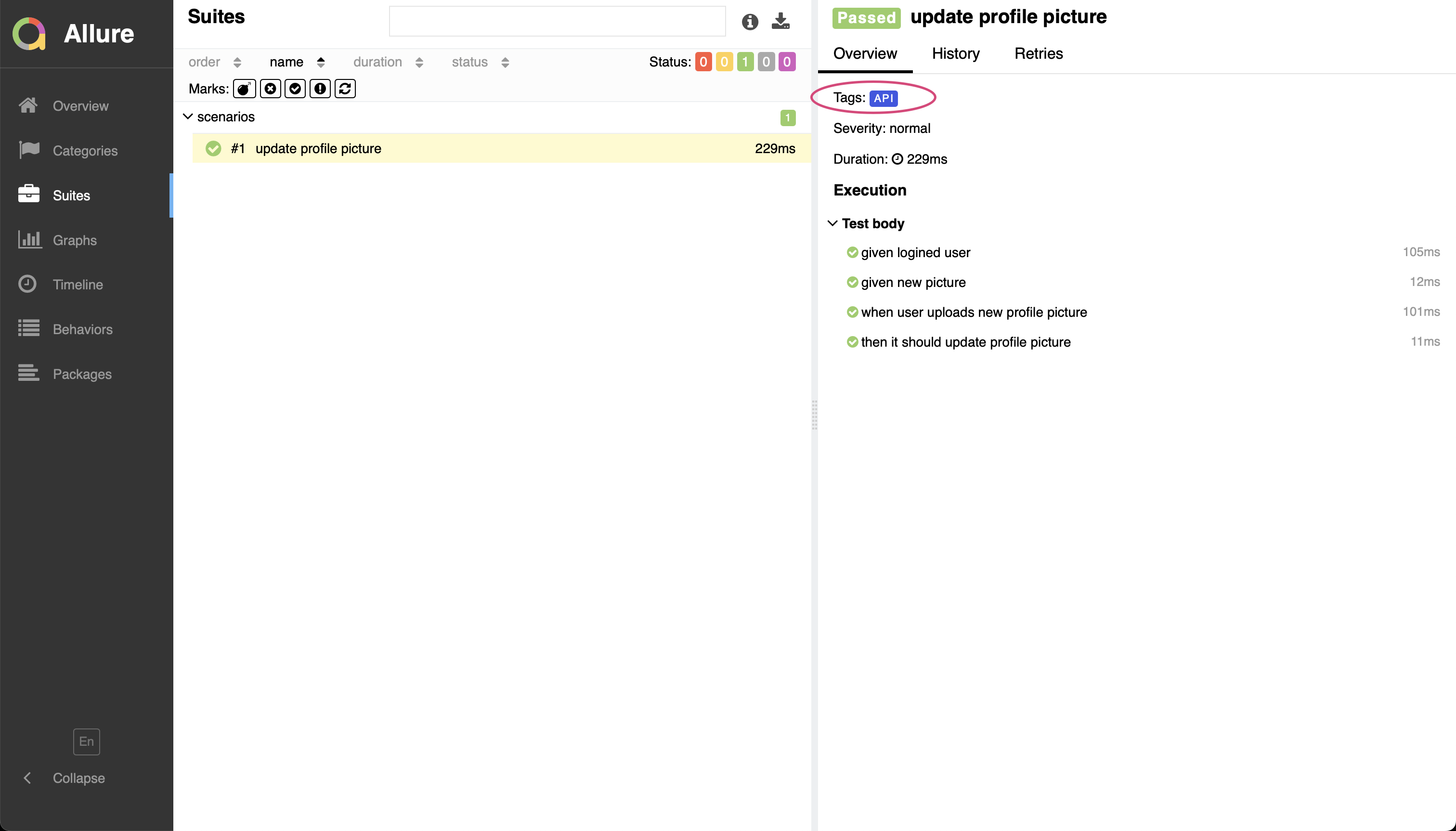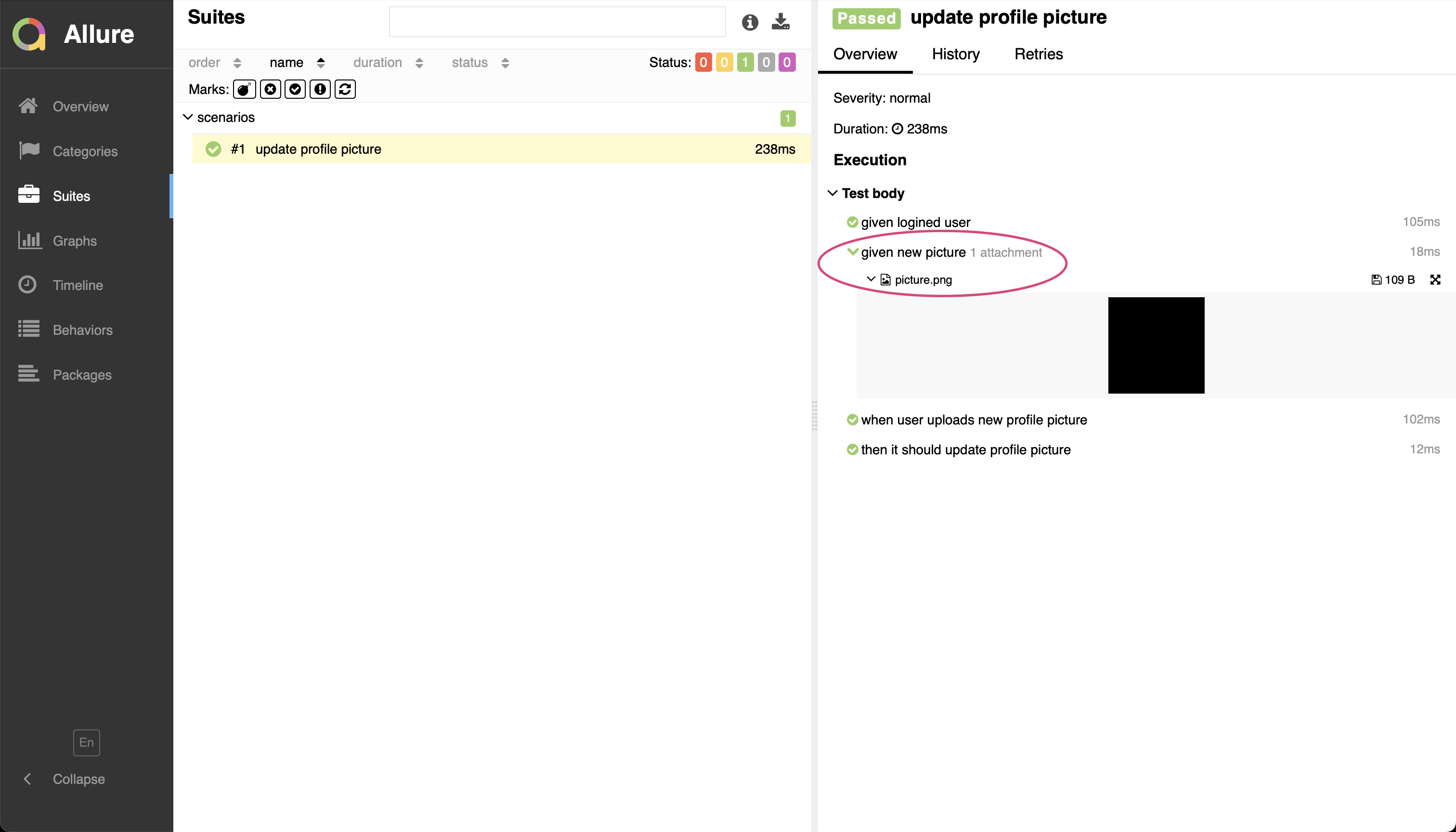Allure Reporter
Allure Reporter is a plugin for Vedro that provides integration with the Allure Framework, a flexible, lightweight, multi-language test report tool. The Allure Framework offers a concise representation of test results in a clean, easily understandable web report format.
Installation
- Quick
- Manual
For a quick installation, you can use a plugin manager like so:
$ vedro plugin install vedro-allure-reporter
If you prefer a manual approach, follow these steps:
- Install the package using pip:
$ pip install vedro-allure-reporter
- Then, enable the plugin in the
vedro.cfg.pyconfiguration file:
# ./vedro.cfg.py
import vedro
import vedro_allure_reporter
class Config(vedro.Config):
class Plugins(vedro.Config.Plugins):
class AllureReporter(vedro_allure_reporter.AllureReporter):
enabled = True
Basic Usage
To run tests with the Allure reporter, use the following command:
$ vedro run -r rich allure
This command executes your tests and saves the report data in the ./allure_reports directory.
To generate a report from the saved data, use the Allure command-line tool as follows:
$ allure serve ./allure_reports
This command will serve up the report (demo).
If you are using Allure TestOps, you can upload your report using allurectl
Show more...
$ export ALLURE_ENDPOINT=<endpoint>
$ export ALLURE_PROJECT_ID=<project_id>
$ export ALLURE_TOKEN=<token>
$ export LAUNCH_ID=`allurectl launch create --launch-name test --no-header --format ID | tail -n1`
$ allurectl upload ./allure_reports --launch-id $LAUNCH_ID
$ allurectl launch close $LAUNCH_ID
Labels
You can easily label your tests using Allure's built-in decorators. Labels help you categorize your tests and add metadata for better reporting and visualization.
For example, you can label behaviors using the Epic, Feature, and Story decorators:
import vedro
from vedro_allure_reporter import allure_labels, Story, Epic, Feature
@allure_labels(
Epic("User Profile Management"),
Feature("Updating Profile Details"),
Story("Profile Picture Update")
)
class Scenario(vedro.Scenario):
subject = "update profile picture"
...
In addition to the built-in labels, Allure also allows you to create custom labels:
import vedro
from vedro_allure_reporter import allure_labels, AllureLabel
@allure_labels(AllureLabel("smoke", "true"))
class Scenario(vedro.Scenario):
subject = "update profile picture"
...
Configuration
The Allure Reporter is customizable to your needs. You can define the project name, set the report directory, attach tags, artifacts, define scope, and even apply global labels.
Project Name
# ./vedro.cfg.py
class AllureReporter(allure_reporter.AllureReporter):
project_name = "<project_name>"
This option adds the "project_name" label to every scenario. This is useful when your final report contains scenarios from different projects or repos.
Report Directory
# ./vedro.cfg.py
class AllureReporter(allure_reporter.AllureReporter):
report_dir: Path = Path("./allure_reports")
This option sets the directory for Allure reports. The default report directory is ./allure_reports.
Tags
# ./vedro.cfg.py
class AllureReporter(allure_reporter.AllureReporter):
attach_tags = True
You can attach tags to your Allure report. This option is set to True by default.
For example:
import vedro
class Scenario(vedro.Scenario):
subject = "update profile picture"
tags = ["API"]

Artifacts
# ./vedro.cfg.py
class AllureReporter(allure_reporter.AllureReporter):
attach_artifacts = True
Artifacts, such as files and logs, or other supplementary data, can be attached to your report. This option is set to True by default.
- FileArtifact
- MemoryArtifact
import vedro
from vedro.plugins.artifacted import attach_artifact, FileArtifact
from PIL import Image
from pathlib import Path
@vedro.context
def generated_profile_picture(filename="picture.png") -> Image:
image = Image.new("RGB", size=(100, 100))
image.save(filename, format="png")
artifact = FileArtifact(filename, "image/png", Path(filename))
attach_artifact(artifact)
return image
import vedro
from vedro.plugins.artifacted import attach_artifact, MemoryArtifact
from PIL import Image
from io import BytesIO
@vedro.context
def generated_profile_picture(filename="picture.png") -> Image:
binary = BytesIO()
image = Image.new("RGB", size=(100, 100))
image.save(binary, format="png")
artifact = MemoryArtifact(filename, "image/png", binary.getvalue())
attach_artifact(artifact)
return image
This will attach the generated profile picture to the Allure report as an artifact.

Scope
# ./vedro.cfg.py
class AllureReporter(allure_reporter.AllureReporter):
attach_scope = True
The Scope can be attached to your Allure report. Note, this is set to False by default.

Global Labels
# ./vedro.cfg.py
from vedro_allure_reporter import AllureLabel
class AllureReporter(allure_reporter.AllureReporter):
labels = [
AllureLabel("microservice", "profile"),
]
You can use this configuration option to add custom labels to each scenario.
Command Line Arguments
--allure-report-dir: Sets the directory for Allure reports. The default is./allure_reports.--allure-attach-scope: Attaches scope to the Allure report.
These command-line arguments can be used to override the default configurations specified in the vedro.cfg.py file.
Running Scenarios with Labels
Vedro Allure Reporter allows running specific scenarios annotated with particular Allure labels.
To filter and execute scenarios based on specific Allure labels, use the --allure-labels argument followed by the label name and its corresponding value:
$ vedro run --allure-labels label1=val1 label2=val2 ...
For example, to run scenarios exclusively labelled with the Epic "User Profile Management" and the Feature "Updating Profile Details", use the following command:
$ vedro run --allure-labels epic="User Profile Management" feature="Updating Profile Details"